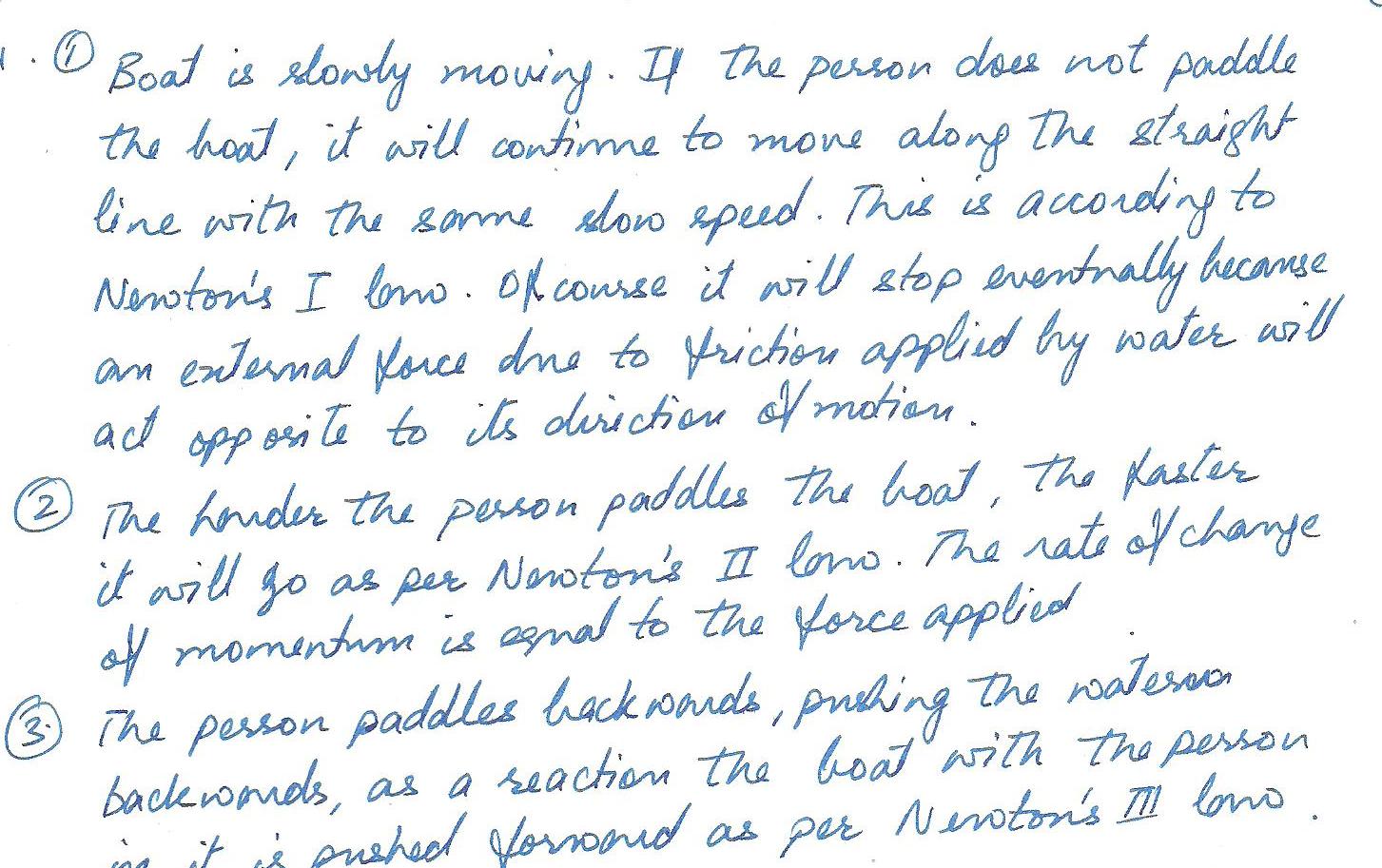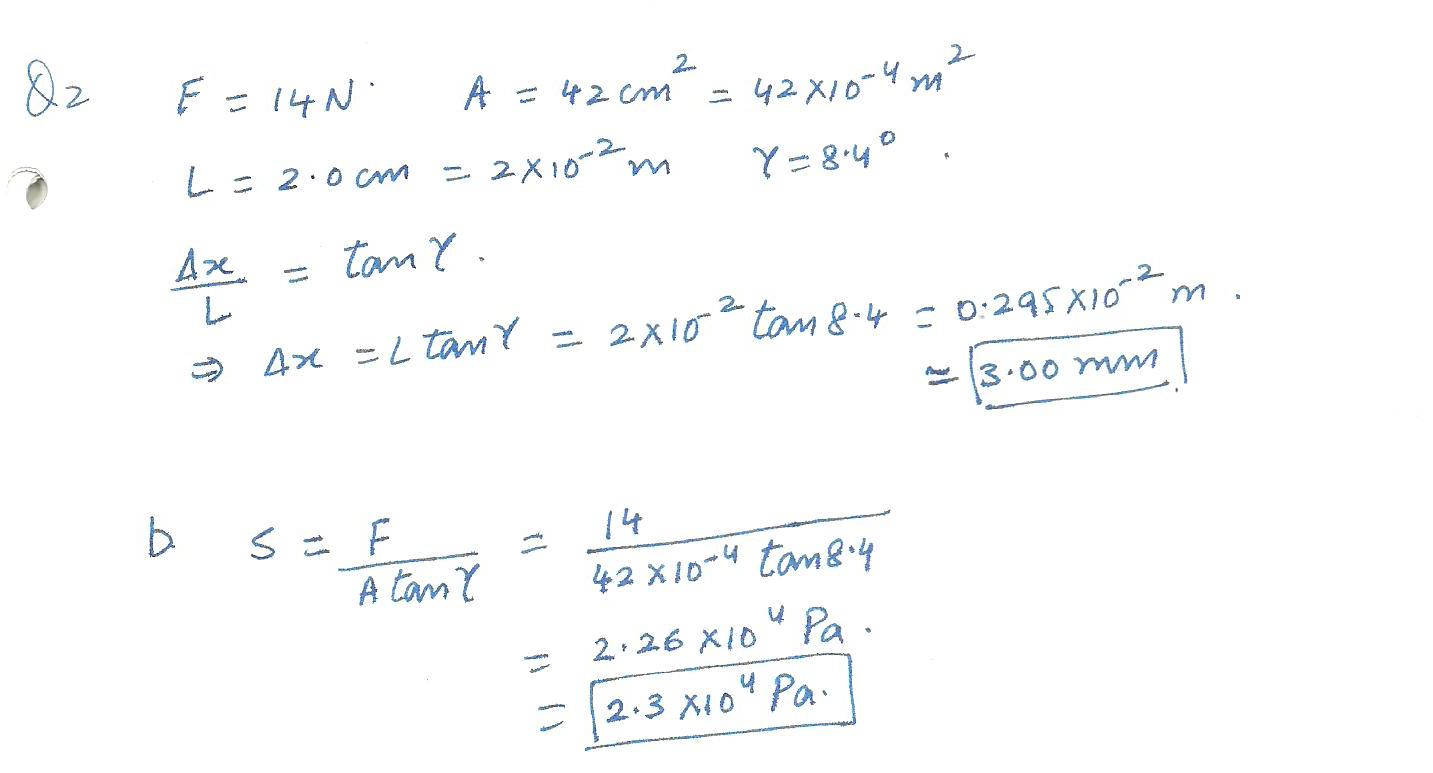Physics Force & Laws Of Motion Level: Misc Level
Helicopter A
Three forces act on a helicopter that's flying at a speed of 100 km/h to the right: its; weight is 53, 800 N( determine its mass as well), it exerts a lift force of 58,900 N at an angle of 69 % from the positive horizontal, and it experiences air resistance along the negative horizontal of 21,100 N.
a) Make a drawing with all force vectors, label them too.
b) Write down Newton,s law in vector from.
c) Determine the total force and determine the acceleration.

Physics Force & Laws Of Motion Level: Misc Level
Car in a banked curve
Make a drawing of a car driving through a frictionless banked curve.Draw in all force vectors and label them. Write down Newton,s law pertaing to this scenario.

Physics Force & Laws Of Motion Level: Misc Level
Astronaut
Suppose an astronaut is taking a space walk to fix his spacecraft with a hammer. His life-line breaks and the jet packs on his backpack are out of fuel.Explain how can he return safely to his spaceship (without someone else,s help)?

Physics Force & Laws Of Motion Level: Misc Level
Boat on the Water
A person sits in boat, having a paddle and other gear. The boat is slowly moving along in the middle of a lake. Apply each of Newton,s 3 laws in terms of what could happen to the boat, the person, the paddle, the water.

Physics Force & Laws Of Motion Level: Misc Level
A large sponge has forces of magnitude 14 N applied in opposite directions to two opposite faces 42 cm2. The thickness of the sponge (L) is 2.0 cm. The deformation angle (y) is 8.4%.
(a) What is x?
(b) What is the shear modulus of the sponge? Pa

Physics Force & Laws Of Motion Level: Misc Level
A U-238 nucleus ( mass =238 units) decays,transforming into an alpha particle ( mass =4 units) and a residual thorium nucleus ( mass =234 untis) .If the uranium nucleus was at rest, and the alpha particle has a speed of 1.3 E7 m/s. Determine the recoil speed of the thorium nucleus.

Physics Force & Laws Of Motion Level: Misc Level
A 0.26 kg stone you throw rises 36.3 m in the air. what is the magnitude of the impulse the stone received from your hand while being thrown? Aldo , what is the impulse the stone receives from your hand while being thrown?

Physics Force & Laws Of Motion Level: Misc Level
A 3 kg ball of putty moving at 1 m/s collides and sticks to a 2 kg ball initially at rest. The putty and ball then move with a momentum of:
(a) 4 Ns
(b) 1 Ns
(c) 3 Ns
(d) 2 Ns
(e) 0 Ns

Physics Force & Laws Of Motion Level: Misc Level
In an inelastic collision, the final total momentum is
(a) the same as the inittial momentum
(b) less then the initial momentumse
(c) none of these
(d) more than the initial momentum
(d) more tha

Physics Force & Laws Of Motion Level: Misc Level
A bullet, of mass 20 g, traveling at 350 m/s, strikes a steel plate at an angle of 30 % with the plane of the plate. It ricochets off at the same angle ,at a speed of 320 m/s. What is the magnitude of the impulse that the wall gives to the bullet?
(a) 0.30 N s
(b) 300 N s
(c) 0.52 N s
(d) 6.7 N s
(c) 0.52 N s

Physics Force & Laws Of Motion Level: Misc Level
Two cars suffer a head -on collision. What is conserved in the collision?
(a) none of these
(b) kinetic energy
(c) momentum
(d) mechanical energy and momentum

Physics Force & Laws Of Motion Level: Misc Level
The momentum of a particle is proportional to the square of its velocity.
(a) Ttue
(b) False

Physics Force & Laws Of Motion Level: Misc Level
A 10,000 kg railroad car traveling at a speed of 24.0 m/s strikes an identical car at rest. Ifthe cars lock together as a result of the collision,what is their common speed afterward?

Physics Force & Laws Of Motion Level: Misc Level
Automobile air bags reduce what during a collision?
a. speed of the automobile
b. the forces exerted upon the passenger
c. the kinetic energy transferred to the passenger
d. the impulse exerted upon the passenger

Physics Force & Laws Of Motion Level: Misc Level
A 1500 kg car moving east at 27 m/s collides with a 1640 kg car moving south at 15 m/s and the two cars stick together.
(a) What is ihe velocity of the cars right after the collision?
(b) How much kinetic energy was converted to another form during the collision?

